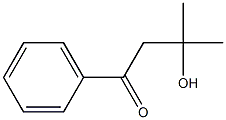To a four-necked flflask, equipped with a mechanical stirrer, a reflflux condenser with a nitrogen inlet, a thermometer, and a pressure-equalizing dropping funnel, was added 36 g (0.30 mol) of acetone and 41.4 g (0.41 mol) of triethylamine under a nitrogen atmosphere. To this mixture, stirred at room temperature under nitrogen, was added via the dropping funnel 43.2 g (0.40 mol) of chlorotrimethylsilane over 10 min. The flflask was then immersed in a water bath and the contents were warmed to 35°C. The water bath was removed and the dropping funnel was charged with a solution of 60 g (0.40 mol) of sodium iodide in 350 mL of acetonitrile. This solution was added to the stirred mixture in the flflask at such a rate that the temperature of the reaction was maintained at 34–40 °C without external heating or cooling. The addition required approximately 1 h. When the addition was complete, the reaction mixture was stirred for a further 2 h at room temperature. The contents of the flflask were then poured into ice-cold water, and the aqueous mixture was extracted three times with pentane. After extraction, the organic layer was dried over potassium carbonate and then concentrated with a rotary evaporator under reduced pressure. The crude product was a mixture of 97% of the desired silyl enol ether and 3% of acetophenone, as shown by gas chromatography. The crude product was distilled in a Claisen flflask at a pressure of about 40 mm. After a small forerun (about 3 g), 52.3 g (91%) of silyl enol ether, bp 124–125.5°C, was obtained. The purity of this material was approximately 98%, as judged by gas chromatography and 1 H NMR spectroscopy.


